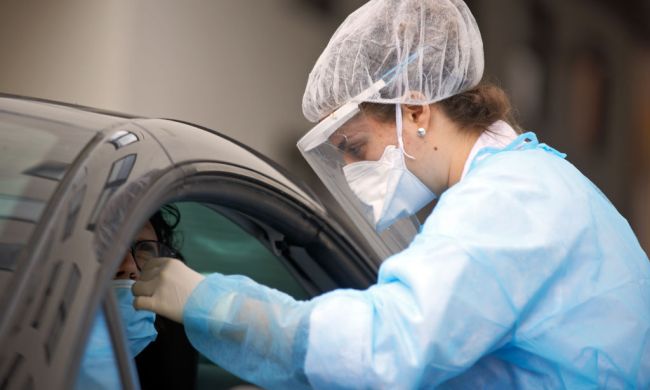The automated contact-tracing system deployed by Google and Apple that was aimed at curbing the spread of COVID-19 has been, in no uncertain terms, a complete failure. The basic system’s effectiveness has been called into question continuously. The apps built on the system have been, frankly, useless — that is, in regions where apps were built at all. And now 10 months after the announcement that was supposed to be pivotal in our fight to stop the spread, we have exactly zero evidence that shows it was helpful in the slightest.

A flawed system
The system itself, on a technical level, is the root of the problem. In an effort to provide something that could be used universally, while also protecting users’ privacy, Google and Apple came up with a system that was doomed to be useless. It didn’t use GPS or cell tower triangulation, which I appreciate from a privacy standpoint, but that means it relied on Bluetooth LE (low energy) signals to determine proximity and duration of proximity.
“We should’ve seen this from the start: Relying on Bluetooth was destined to lead to failure.”
If there’s one thing everyone understands about Bluetooth from their daily life, it’s that this technology is incredibly inconsistent and finicky. It’s just the same in contact tracing. Theoretically, phones would be able to tell when people were within 6 feet of each other for an extended period, an indicator that they could have exposed one another to the virus. Outside of the obvious examples of when you’re within 6 feet of someone with zero chance of transmitting the virus, such as being on the other side of a wall or window, there are myriad other shortcomings in using Bluetooth LE as a technology to accurately determine proximity between two devices. There were, expectedly, early struggles. Just a few months after launch, in July, we wrote about how early contact tracing apps were an absolute failure.
An excellent study out of Ireland tested the perceived location of smartphones on a tram compared to their actual locations and found the following: “In the tram, there is little correlation between received signal strength and distance between handsets.” The conclusions are even more damning when the data is provided to contact tracing apps from various European countries: When the Swiss and German apps fed the data, they found zero potential infections despite being given data of people being in close proximity for an extended time. Worse yet, the Italian app “generates a true positive rate of 50% and a false positive rate of 50%.” The summary is, well, damning: “Our analysis indicates that the performance of such detection rules is similar to that of triggering notifications by randomly selecting from the participants in our experiments, regardless of proximity.”
We should’ve seen this from the start: Relying on Bluetooth was destined to lead to failure.
Paltry app adoption
But the blame can’t be laid solely at the feet of Google and Apple. It turns out that even with apps that use GPS — theoretically more useful but also highly invasive to users’ privacy — the effectiveness is dubious. An early analysis of Iceland’s contact tracing app, which nearly half of the population used and also tracked people with GPS, showed that it was still ineffective in actually tracking infections.
Even if the apps were effective from a technological perspective, they can be effective in a public health context only if people actually use them. Sadly, app adoption is incredibly low. In New York, the COVID Alert NY app has, as of the end of 2020, just 1.2 million downloads — in a state of over 19 million people, that’s just over 6% adoption. Even if that was only limited to New York City’s population, it would represent a 14% share. It’s nowhere near the critical mass required to actually make a difference. And it hasn’t made one: A report found that only 1,400 infections have been tracked through the app, triggering just 1,300 subsequent notifications to potential contacts. In the time the app was available, New York tallied nearly half a million cases.

Looking at Google Play numbers for reference, doubling to include iOS, my home state of Washington would have just a 2.5% app adoption rate. California’s is 2.5%. Adoption, across the country, has been horrendous: Virginia 10.6%, New Jersey 3.9%, Alabama 3.3%, Nevada 2.9%, and Wyoming 1.1%. And that’s for states that even have an app. Oregon, where many of my co-workers live, doesn’t have one (yet). Over half of states don’t, in fact.
Behaviors needed to change
Despite the general public having a serious fear of coronavirus, changing their behaviors in just about every aspect of their lives, and the fact that these apps require but a minute of setup time to be used, people simply haven’t done so.
Even in New York City, an area hit earliest and hardest by the virus, nobody bothered with the COVID Alert NY app. I started asking everyone I knew whether they installed the app; not a single person had, and a vast majority weren’t even aware of the app. The New York City Department of Health did little, if any, advertising or public awareness campaigns for the app. Its website has zero mention of the app, actually — even on its “NYC Official Mobile Applications” page. Testing centers, in my experience, have given zero information on the app or not suggested that results be shared with the app — if your results aren’t shared with the app, it’s useless, because the testing centers don’t centrally automatically link your results to the contact tracing system.
“The launch of this exposure notification tracking system was actually detrimental to states’ virus response.”
And that assumes that everyone who installs the app actually uses it. Contact tracing apps can connect the dots of who was within 6 feet of one another at any given time, but they only become effective if infections are reported, If a user doesn’t set up the app and consent to the terms, doesn’t inform the app of a positive test, or doesn’t have notifications turned on to learn of potential contact, the app might as well not be installed at all.
Even developments over four months later that enabled states to start taking advantage of the exposure notification system without building a bespoke app don’t seem to have made any impact. “Knowledge is power,” the saying goes — but in this case, it’s really the actions that matter. Having data of where people are and potential points of infection, even if the data is good, isn’t useful if people aren’t then compelled to act on that information by isolating and getting tested.

Time and money wasted
It can be argued that the launch of this exposure notification tracking system was actually detrimental to states’ response to the virus. Any moment of time, or public health budget dollar, spent developing these apps was time and money that could have been spent on literally anything else that had historically been proven to help stop the spread of infectious diseases. The COVID Alert NY app reportedly cost about $700,000 to develop, plus additional costs to maintain and monitor.
“History shouldn’t be kind to Google and Apple’s attempts to help.”
Apple and Google partnered to do something they felt would be helpful to the public. They did so with no profit motive, and kept users’ privacy in mind every step of the way. And despite the states and general public not understanding the technological limitations, many people put their faith in this system’s abilities to actually help fight the pandemic. It did not, in any way, help.
History shouldn’t be kind to the contact tracing app system. That these contact tracing apps have been mostly forgotten at this point, given much more important developments in the spread of and fight against COVID-19 in the months since their launch, should be considered a blessing to the companies and governments involved that completely failed to make an impact.



